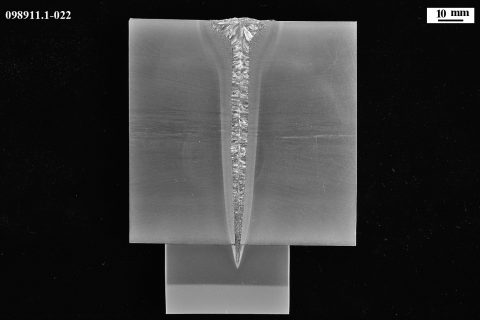“TECNALIA leads the development and implementation of Local vacuum electron beam welding”
TECNALIA develops local vacuum electron beam welding (EBW) for high productivity and energy efficiency
TECNALIA, with more than 20 years of experience in the electron beam welding process, has become a benchmark for the development of innovative solutions in this field. Thanks to its in-depth technical knowledge and its ability to adapt this technology to the specific needs of various sectors, TECNALIA can make a significant contribution to the implementation of local vacuum electron beam welding.
Electron beam welding is a joining process developed in the late 1950s where the heat required for fusion is obtained from the kinetic energy of electrons that have been accelerated by means of accelerating voltage. As the electrons collide with the workpiece, the kinetic energy is converted into heat and melts the material to be welded.
The main characteristics of electron beam welding are the following:
- High productivity: The high power developed and the ability to focus the beam on a small spot size make this process the most energy-dense. The high energy density allows fast welding speed and large weld thicknesses to be welded in a single pass.
- High quality: It is an automatic process that ensures a high level of repeatability and high-quality welds, which is why it has been implemented in highly demanding sectors such as the aerospace, nuclear and automotive industries, among others.
- Versatility: It welds materials that have problems with other traditional processes, such as titanium due to its reactivity, high carbon steel due to its tendency to crack and copper due to its high thermal conductivity, aluminium, dissimilar joints, etc.
- Vacuum: It is mainly welded in high vacuum chambers, but can also be used in medium vacuum or non-vacuum chambers. The highest penetrations are obtained in high vacuum as the beam is not scattered by colliding with air particles.
Local vacuum electron beam welding
Until now, the main limitation of the process was the need to weld in a vacuum chamber, which limited the size of the part to be welded and welding times. This limitation has been overcome thanks to local vacuum electron beam welding. Instead of a vacuum chamber, an innovative local vacuum system is used which creates and maintains a vacuum only around the seam being welded.
This technological breakthrough offers, among other applications, longitudinal and circumferential welds over 100mm thick in a single pass on all types of circular section equipment such as pressure vessels and offshore wind turbine parts. This makes it a more productive and efficient alternative to submerged arc welding, with a welding speed up to 30 times faster and energy savings of up to 90%, enabling a reduction in CO2 emissions of up to 97%.

